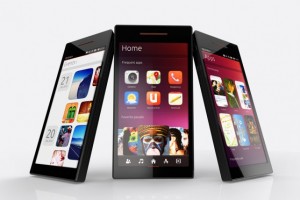Share This
Related Posts
Tags
Ubuntu Phone OS
By Anca Gagiuc on Aug 30, 2013 in Technology
Canonical’s Ubuntu Edge won’t happen after the company’s effort to raise $32 million via crowdsourced funding fell short with nearly $13 million raised in 31 days. However, the experiment proved that mass market phone companies can’t rest too easy – there are still ways to tackle the status quo, and room for innovation that many customers would be excited to pay a premium for.
The Ubuntu Edge has been highly praise d – the mammoth with a 128GB SSD and a minimum 4GB of RAM, equipped with a multi-core CPU. Its announced ability to turn into a desktop when docked gave a clear idea about the direction for the mobile era. But the 24,000 supporters were not enough for this project to become reality.
d – the mammoth with a 128GB SSD and a minimum 4GB of RAM, equipped with a multi-core CPU. Its announced ability to turn into a desktop when docked gave a clear idea about the direction for the mobile era. But the 24,000 supporters were not enough for this project to become reality.
Is it that the world is not yet ready for convergence, unwilling to use a single device that acts as both phone and PC? Or is it too high of a price? Perhaps both. Rumors have it that despite the ambitious funding target of $32 million, the device would have coasted backers $830 to get a phone.
Mark Shuttleworth, the founder of Canonical, thinks the core lesson here is first to secure substantially more industrial commitment to the concept as that will take care of covering the base development costs. The domino effect will be to set a lower target of $10 or $20 million and to signal the backers that they’ll get the device at cost before it actually goes onto the market. Words of wisdom?
Despite the failure to raise the full amount that would have made possible the manufacture of the Ubuntu Edge phone, the plans for it are shelved, not abandoned. In the meantime, a Linux-based smartphone is expected to be launched next year, followed by a tablet. To make that happen, in October, Canonical will release a mature enough version of the OS so that manufacturers can start working on devices that will use this operating system starting with the second quarter of next year. The more adventurous ones can already install a pre-release version on Google Nexus products.
Ubuntu Touch doesn’t show any hardware buttons, the phone is controlled through its four edges. Initially a welcome screen with a central message is displayed, just as in the desktop version. The launcher bar that hosts the pinned apps is brought up through a left-to-right swipe from the left edge; the Ubuntu symbol, placed on this launcher bar, brings to the front a sequence of Home screens grouped by function: Apps, Music, Contacts and Videos.
To browse through these screens and all the apps open one must swipe right-to-left from the right edge. The status indicators for messages, Wi-Fi, audio, mobile service, battery and time are expanded by a top-to-bottom swipe. Swiping up from bottom edge brings up the toolbar specific to each active application.
Despite failure to bring Edge to life, Canonical hasn’t lost anything. In fact, it recently gained a contract with the Chinese government to build a China-specific version of its own OS. Probably a China-specific OS won’t do much to affect the dominance of Android and iOS, especially in the short-term, but if China’s government focuses on putting lasting investment in home-grown alternatives, favoring Chinese software and services, the duopoly might be looking at an imminent threat.
Disciples of the Edge probably won’t be as inspiring, but the prophecy continues, people are now talking about Ubuntu Mobile.
